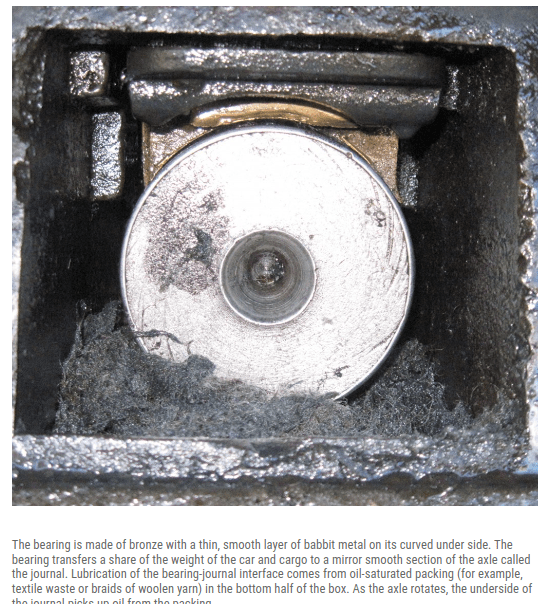FacEngrPE
Mechanical
- Feb 9, 2020
- 1,643
The journal bearings used prior to roller bearings were in my opinion awful, but railroads ran on them successfully until the modern roller bearing replaced them.
The journal boxes have no seals and relatively large clearances. They seem to always be rather dirty.

Journal Boxes And Their Inspection By Heritage Rail News February 7, 2016Features
If you find technical details interesting these documents are full of them.
SKF Railway technical handbook Volume 1
Axleboxes, wheelset bearings, sensors, condition monitoring, subsystems and services
SKF Railway technical handbook Volume 2
Drive systems: traction motor and gearbox bearings, sensors, condition monitoring and services
The journal boxes have no seals and relatively large clearances. They seem to always be rather dirty.

Journal Boxes And Their Inspection By Heritage Rail News February 7, 2016Features
If you find technical details interesting these documents are full of them.
SKF Railway technical handbook Volume 1
Axleboxes, wheelset bearings, sensors, condition monitoring, subsystems and services
SKF Railway technical handbook Volume 2
Drive systems: traction motor and gearbox bearings, sensors, condition monitoring and services
